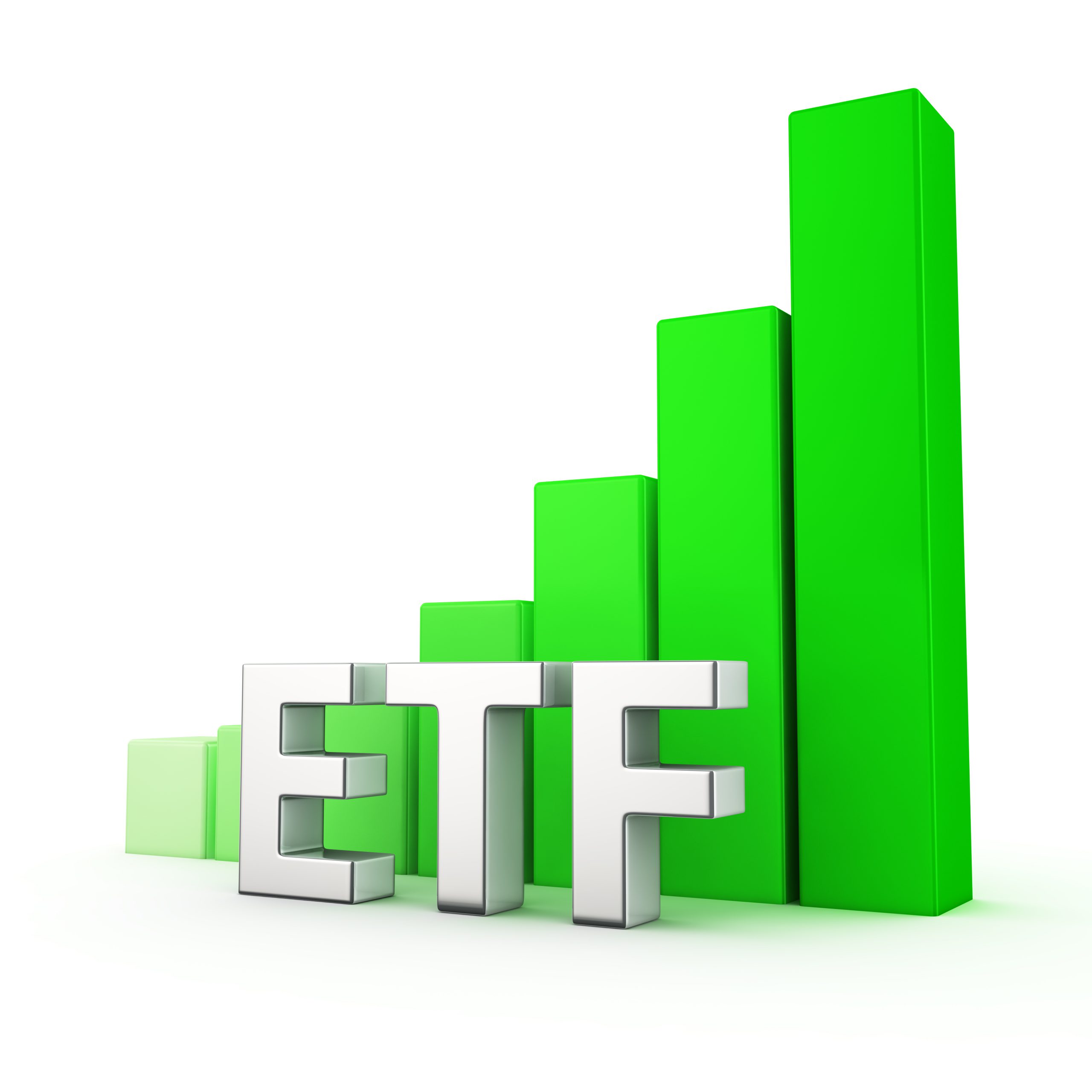









Low-cost index funds offer a simple way to grow your nest egg over the long term [69ffdb0e]. This article highlights seven of the best long-term ETFs to consider, including IVV, which tracks the S&P 500 and provides exposure to the largest U.S. stocks [69ffdb0e]. VYM focuses on income-generating corporations with above-average yield [69ffdb0e]. VUG is suitable for investors looking for growth potential in technology and innovative sectors [69ffdb0e]. VTI provides broad market exposure by holding nearly every listed stock on U.S. exchanges [69ffdb0e]. VXUS offers a worldwide approach to global stocks for those interested in international markets [69ffdb0e]. LQD is a bond ETF that provides long-term income [69ffdb0e]. HYG offers higher yield but with higher risks [69ffdb0e]. These ETFs are suitable for investors with a long-term investment horizon and a buy-and-hold strategy [69ffdb0e]. The article also discusses the Vanguard MSCI Index International Shares ETF (VGS) and why it is a good investment for every portfolio [b8445388]. The ETF aims to provide exposure to many of the world's largest companies listed in major developed countries. It has a diversified portfolio with holdings in various countries and sectors. The ETF has a low management fee of 0.18%, making it a cost-effective option for investors. The article suggests that businesses that are growing their customer base and increasing profit are likely to appreciate in value over the long term. The article also mentions the average distribution return from the ETF and provides an example of potential returns over a 15-year period. It concludes by stating that investments can go up and down, and past performance is not indicative of future returns [b8445388].
Karrie Gordon and Nick Peters-Golden debate whether investors should include options-based ETFs in their portfolios to enhance income potential [acb0eacc]. Karrie argues that options-based ETFs offer increased income potential and tax efficiency, while Nick expresses concerns about the complexity and cost of these strategies. They discuss the use of covered calls in options-based income ETFs and the benefits of these strategies in uncertain times. Karrie highlights the higher yields and lower volatility offered by options-based ETFs, while Nick questions the capped upside potential and suggests alternative strategies. They conclude that investors should carefully consider the education, due diligence, and fees associated with options-based ETFs before deciding if they are worth it [acb0eacc].
Quality large-cap ETFs FT Cboe Vest Fund of Deep Buffer ETFs (BUFD), Schwab U.S. Large-Cap ETF (SCHX), and Global X NASDAQ 100 Covered Call ETF (QYLD) could be wise portfolio additions now [5a5f5fd1]. BUFD invests in stocks of companies operating across diversified sectors. SCHX tracks the Dow Jones U.S. Large-Cap Total Stock Market Index. QYLD follows a “covered call” strategy in which the ETF buys the stocks in the Nasdaq 100 index and then sells corresponding call options [5a5f5fd1]. SCHX has gained 8.7% year-to-date and 1.2% intraday. QYLD has gained 4% year-to-date and marginally intraday. The ETFs have positive prospects and strong fundamentals, reflected in their POWR Ratings. SCHX has an overall rating of B, and QYLD has an overall rating of A. Investors could consider investing in large-cap ETFs as they offer an opportunity to hold shares in successful and reliable companies without individual company analysis or selection [5a5f5fd1].
Investors can use ETFs to hedge against a potential stock market crash. Some options include SQQQ, which offers three-times leveraged inverse performance of the Nasdaq-100 index, and SH, which aims to provide the inverse of the S&P 500's daily results. HDGE is an active short ETF that identifies companies with deteriorating earnings or aggressive accounting practices. MRSK gives investors full exposure to the S&P 500 while deploying a defensive hedge with equity index put options. AllianzIM offers buffered ETFs that provide downside protection and caps on potential positive returns. These ETFs have thinly traded volumes [36b48966]. The article suggests that investors carefully consider the risks and potential benefits of these ETFs before incorporating them into their portfolios. It emphasizes the importance of diversification and due diligence in managing investment risk. The article concludes by reminding investors that ETFs are subject to market volatility and that past performance is not indicative of future results [36b48966].
The BetaShares Global Quality Leaders ETF (ASX: QLTY) is a diversified portfolio of 150 leading global companies selected based on factors such as high return on equity, profitability, low leverage, and earnings stability [0ca622ab]. The ETF aims to outperform global equities indices and has a total funds under management (FUM) of $325.64 million. It charges a yearly management fee of 0.35%. Investors interested in QLTY can access a free report on the ETF and compare it with similar ETFs in the International shares sector. The information provided is general financial advice and does not take into account individual needs or objectives [0ca622ab].
VGRO, or the Vanguard Growth ETF Portfolio, is designed to provide long-term capital growth by investing in a diversified portfolio of equity and fixed-income securities. It has a target allocation of around 80% in stocks and 20% in bonds. VGRO has a management expense ratio (MER) of 0.24%, which is higher than similar competitors. The fund is heavily weighted towards Vanguard Index ETFs such as VUN.TO, VCN.TO, VIU.TO, VAB.TO, VEE.TO, VBG.NO, and VBU.NO. VGRO has assets under management of around $4.8 billion and pays a quarterly distribution with a yield of 2% to 2.3%. The fund is rebalanced regularly to maintain its target asset mix. VGRO is suitable for investors with a moderate tolerance for risk and a long-term investment horizon. In terms of performance, VGRO has lagged behind its competitors by around 0.25% since 2019, likely due to its higher fee and exposure to the Canadian market. Alternatives to VGRO include XGRO, ZGRO, VEQT, VBAL, XBAL, and ZBAL. Overall, VGRO may be less attractive compared to its competitors due to its higher fee and exposure to the Canadian market [4f4bbcb1].
Investors have higher confidence in the U.S. economy, and that's lifting the stock market. They're also more willing to stomach pricey valuations in this bull market. Over the long term, a diversified set of growth stocks can add significant value to an individual portfolio. The Vanguard Growth ETF (NYSEMKT: VUG) follows a group of around 200 large-cap growth stocks with a median market cap of $715 billion. It has a high concentration of 'Magnificent Seven' stocks, which make up more than half of the portfolio by value. The economy is holding steady, and even though inflation is still creeping up faster than the Federal Reserve was anticipating this year, analysts agree it looks like the U.S. has avoided a recession. Investors are embracing growth stocks and are willing to accept higher valuations. The Vanguard Growth ETF has a P/E ratio of 37, a sizable premium to the broad market. The stocks in this index are predominantly long-term winners that have a proven track record. Since the fund's inception 20 years ago, it has delivered an 11.2% average annual return. Investing in the Vanguard Growth ETF is like investing in the American growth story. The ETF's ultra-low expense ratio of 0.04% means investors lose very little of their gains to the fund's managers. [87f82ed6]
Investing in the Vanguard Growth fund (NYSEMKT: VUG) is a smart move for investors looking for reliable growth. The fund tracks the CRSP US Large-Cap Growth Index and focuses on large-cap domestic companies. It has outperformed the S&P 500 over most time periods, including a 10-year annualized return of 14.7% vs. 12.5% for the S&P 500. The Vanguard Growth ETF has an average price-to-earnings (P/E) ratio of 38 and holds about 200 stocks. It offers investors the potential for higher growth while adding minimal extra risk. However, investors may still want to keep some money in a broader index fund for lower risk and stability. The article discusses the Vanguard Growth ETF as a potentially better investment option compared to the S&P 500. The Vanguard Growth ETF is a large-cap fund that focuses on companies with above-average growth potential. It offers exposure to companies that can produce market-beating returns while providing stability during volatile times. The ETF has historically outperformed the S&P 500, with a one-time $10,000 investment in the Vanguard Growth ETF in 2004 being worth nearly $79,500 today, compared to around $64,000 for an S&P 500 ETF. The Vanguard Growth ETF has a significant overlap with the S&P 500, with many top growth companies included. The tech sector makes up over 56% of the ETF. While past performance doesn't guarantee future results, the Vanguard Growth ETF is well-positioned to continue producing long-term market-beating returns.
Many sectors are hitting all-time highs, except for the consumer discretionary sector which is down nearly 15% from its all-time high [3929e5c2]. The Vanguard Consumer Discretionary ETF is an excellent choice for patient investors who can endure volatility. The sector relies on consumer spending and is vulnerable to economic health. Despite its recent struggles, the Vanguard Consumer Discretionary ETF has been a long-term winner and is second behind only the Vanguard Information Technology ETF in total return over the last 10 years [3929e5c2]. However, the sector could continue to underperform while interest rates remain high. Macroeconomic factors, especially consumer-focused ones, are vital to the consumer discretionary sector. The sector could continue to be volatile and sell off more, but if you agree with its long-term growth potential, it's one to buy or at least add to your watchlist [3929e5c2].
The article discusses the Vanguard Information Technology Index Fund ETF Shares (VGT) and its unique portfolio composition that is concentrated enough to reap the long-term benefits of technological development while also accounting for volatilities in the economy through diversification into areas of information technology. The author highlights the strong quant ratings of VGT and the current economic and secular trends that align with its holdings. However, the article also mentions the risks of pullbacks in information technology equities, the lack of 'back-end' hardware companies in VGT's portfolio, and potential sector shifts that can make VGT and general tech ETFs less attractive. The degree of diversification in an ETF investment depends on current economic and secular trends and how its portfolio accounts for future growth opportunities.